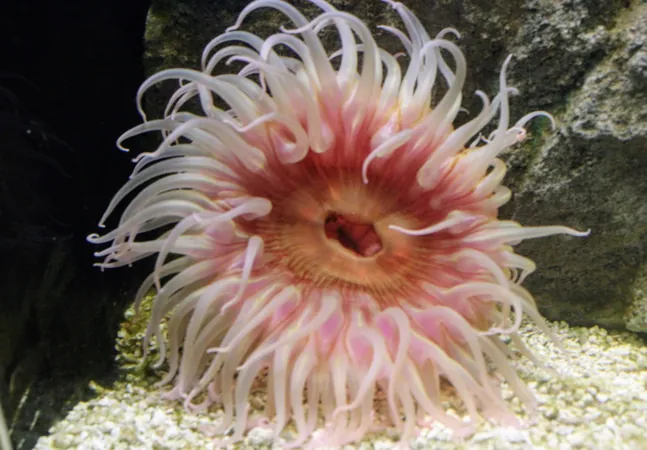
Unveiling the Ancient Connection: Sea Anemones and Humans Share a Biological Secret!
2025-06-15
Author: Daniel
Sea Anemones: More Complex Than They Appear
At first glance, sea anemones may look like simplistic marine creatures, but beneath their simple, radial exterior lies a sophisticated front-to-back body plan. Recent research reveals that these fascinating organisms use a biological mechanism that parallels the developmental processes found in more complex animals, including humans.
The Groundbreaking Discovery of BMP Shuttling
A team of scientists from the University of Vienna has uncovered that sea anemones utilize a process known as BMP (Bone Morphogenetic Protein) shuttling to dictate their body organization. This ancient cellular traffic system has been traced back an astounding 600 million years, suggesting that it existed in a common ancestor shared by a diverse array of species, from insects to humans.
Evolutionary Revelation: A Shared Developmental Toolkit
This revelation not only highlights the profound evolutionary connection between simple creatures like anemones and complex beings but also challenges our understanding of how body plans are encoded and inherited over generations. The research indicates that the vast array of body forms seen in today’s animals may be grounded in a remarkably ancient set of developmental tools.
The Signals Behind Cellular Development
The study focuses on how BMPs act as signaling molecules that steer the development of cells. A crucial player in this process is Chordin, which both obstructs BMP signals and transports them to different areas of the organism, creating crucial gradients in BMP activity. Early-stage cells can interpret these gradients, transforming into various tissues like skin or nerve cells.
Innovative Research Approach with Sea Anemones
Using the species Nematostella vectensis, commonly utilized in laboratory settings, researchers examined the role of Chordin in embryonic sea anemones. By inhibiting Chordin production, they halted BMP activity, resulting in incomplete body axis formation. Further tests revealed that only the mobile form of Chordin could effectively restore BMP signaling, emphasizing its role in actively shuttling these signals throughout the developing organism.
What This Means for Our Evolutionary Understanding
David Mörsdorf, the lead researcher, noted that while not all bilateral organisms use Chordin-mediated BMP shuttling—some animals like frogs do, while others like fish do not—the recurrence of this mechanism in widely diverse species suggests it may be an ancestral strategy. This remarkable find paves the way for re-evaluating the evolution of body plans among early animal lineages.
Future Implications: Insights into Human Development
Understanding BMP shuttling in sea anemones extends beyond evolutionary curiosity; it has potential implications for human health. Since BMP signals play a pivotal role in the development of various tissues, insights from this research could contribute to better understanding and potentially addressing birth defects, guiding tissue growth, and enhancing stem cell therapies.
Unlocking the Secrets of Our Own Biology
By delving into the biology of these simple creatures, scientists stand to unlock secrets that may help in repairing or regenerating human body parts. This study also aids in tracing the lineage of body plan evolution, helping predict which genes or molecular signals are fundamental across all animal life.
Conclusion: A Journey Through Time and Biology
The full findings of this groundbreaking study were published in the journal Science Advances, signaling a leap forward in our understanding of biological evolution. As researchers continue to explore the intricate histories shared across species, the potential for new discoveries grows ever larger.




 Brasil (PT)
Brasil (PT)
 Canada (EN)
Canada (EN)
 Chile (ES)
Chile (ES)
 Česko (CS)
Česko (CS)
 대한민국 (KO)
대한민국 (KO)
 España (ES)
España (ES)
 France (FR)
France (FR)
 Hong Kong (EN)
Hong Kong (EN)
 Italia (IT)
Italia (IT)
 日本 (JA)
日本 (JA)
 Magyarország (HU)
Magyarország (HU)
 Norge (NO)
Norge (NO)
 Polska (PL)
Polska (PL)
 Schweiz (DE)
Schweiz (DE)
 Singapore (EN)
Singapore (EN)
 Sverige (SV)
Sverige (SV)
 Suomi (FI)
Suomi (FI)
 Türkiye (TR)
Türkiye (TR)
 الإمارات العربية المتحدة (AR)
الإمارات العربية المتحدة (AR)